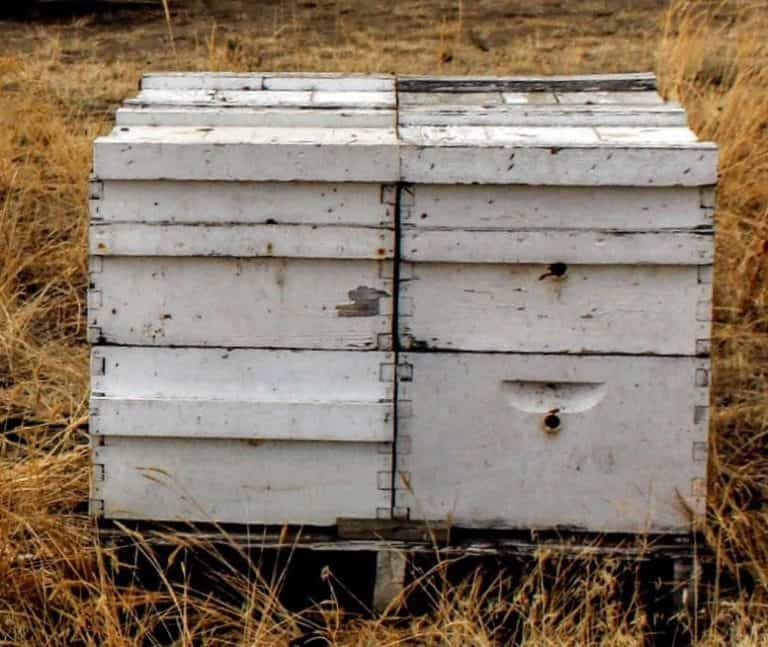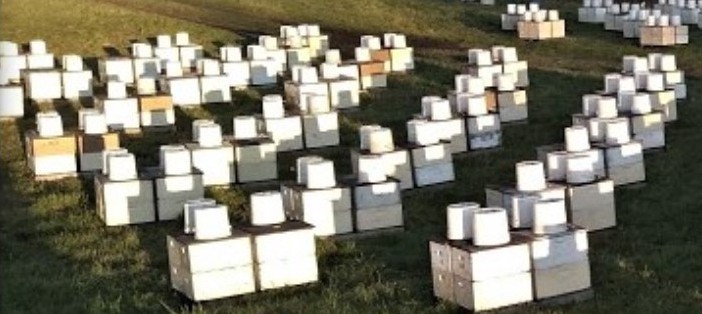A colony of bees is fairly loose in their requirements of a cavity to live in. Basically they need a space of a suitable volume with a defensible entrance and enough protection from the elements so they can maintain an internal environment to survive in good health. A lid for the hive helps meet this last requirement by helping to retain heat and exclude precipitation. At its simplest, a lid can just be a piece of plywood or other material that provides coverage to the top of a hive. Beyond meeting the basic needs of the colony, beekeepers have added modifications to lid and cover designs in order to improve function and fit their own needs. For another example of how beekeepers modify a simple piece of equipment check out this post on bottom boards and what you can learn from looking at them HERE.
In small-scale operations, a cover that overhangs the topmost box on all four sides is most common. These covers that fit over the box are generally referred to as telescoping lids or telescoping covers. Telescoping lids are most commonly built from wood with a thin metal cover over the top to shed water and reflect sunlight.

Telescoping lids are used as part of a 2-piece system in conjunction with an inner cover. If the telescoping covers were to be used without an inner cover they would become “glued” to the hive top with propolis and become difficult to remove due to the overhanging sides. Inner covers can be just a flat piece of hardboard, but most have a rim around the perimeter. Inner covers may also have a hole in the center to allow bees to access a bucket feeder or dry sugar placed above the inner cover. Some beekeepers elect to cut a small notch out of one side of the rim. This notch can then be engaged by flipping the inner cover to act as a top entrance and provide some improved ability for the colony to ventilate.

The telescoping lid and inner cover combination is a great choice for stationary, stand-alone hives but doesn’t work well for palletized hives. Putting hives on pallets became commonplace for beekeepers to move colonies for pollination and forage. Hives need to be tight on pallets so there are not large voids between hives where boxes might shift when they are loaded and strapped. Palletized hives typically only have a very small gap in between them so there is not enough room to accommodate the overhanging sides of telescoping lids.

The need to frequently load and transport palletized hives requires a different lid design. The cover that beekeepers developed for hives that are frequently transported is appropriately referred to as a migratory cover. In addition to being able to fit hives tightly together, the migratory cover eliminates the need for an inner cover. Being able to forego an inner cover provides both cost savings and reduces the amount of equipment beekeepers must purchase, transport, maintain, and replace.
Some migratory covers are designed to sit flush on top of hives without much bee space above the top bars, while others have a rim built in to the cover. These different designs have advantages and disadvantages as shown below.


A top entrance is a fairly common inclusion in the design of a hive. Some beekeepers use auger holes in boxes (see right hive on picture of palletized hive above) to serve this purpose, while others modify the lid design. Incorporating small holes in the edge of lids allows bees to enter and exit and can improve a colony’s ability to ventilate. Some migratory covers also have holes in them that can be used to provide access to a feed can or bucket seasonally and plugged when not in use.



Like most beekeeping topics, the design and function of a hive lid is very simple on the surface but offers an opportunity for refinement and customization based on individual needs. The diversity of designs that are successfully used demonstrate that there is no single ‘best’ design, but if you consider the features and functions available you can arrive at a design that is best for you and your bees.
